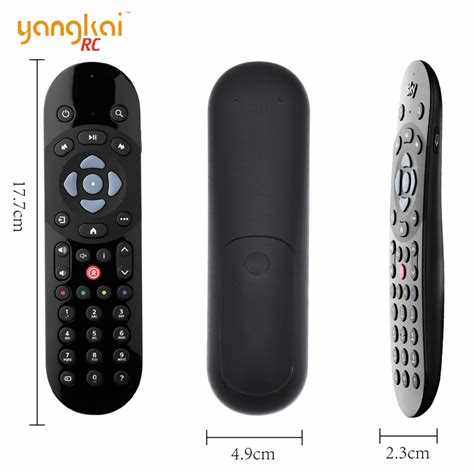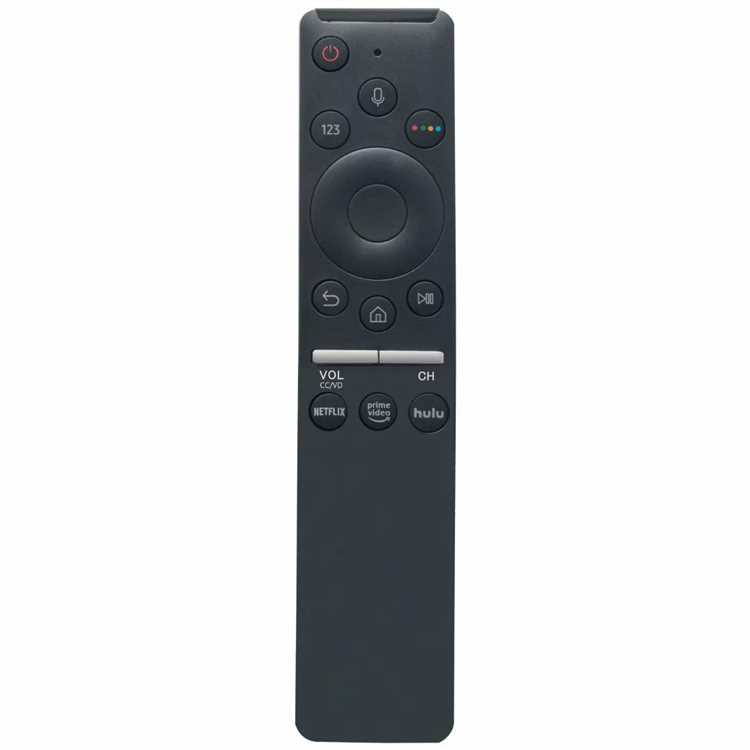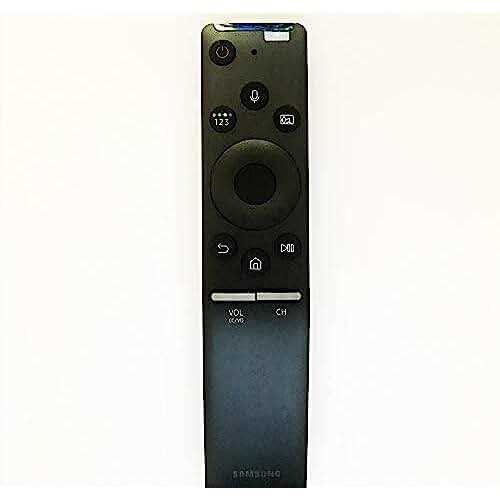When it comes to technology, Samsung is known for its innovative and cutting-edge products. One of the features that many consumers look for in a smart TV is a voice remote. This allows users to control their TV using voice commands, making it easier and more convenient to navigate through channels and apps.
So, the big question is, does Samsung TV have a voice remote? The answer is yes! Samsung offers a range of smart TVs that come equipped with a voice remote. This feature allows users to control their TV with just their voice, without the need for a physical remote. With voice commands, you can easily change channels, adjust the volume, and even search for content.
Having a voice remote can greatly enhance the user experience, especially for those who struggle with physical remote controls. It eliminates the need to navigate through complicated menus and buttons, making it easier to find what you want to watch. Plus, with voice recognition technology constantly improving, the accuracy and responsiveness of voice commands on Samsung TVs continue to get better over time.
So, if you’re in the market for a new TV and want the convenience of a voice remote, Samsung has got you covered. With their range of smart TVs, you can enjoy the ease and simplicity of controlling your TV with just your voice. Say goodbye to endless button pressing and hello to a whole new level of TV control.
Does Samsung TV Have a Voice Remote? Find Out the Answer Here
If you’re wondering whether Samsung TVs come with a voice remote, you’ve come to the right place. In this article, we’ll discuss whether Samsung TV models are equipped with a voice remote and how you can use it for a more convenient TV viewing experience.
Yes, Samsung TVs do have a voice remote feature. Both the high-end and mid-range Samsung TV models are typically equipped with a voice remote control. This feature allows users to control their TVs using voice commands, making it easier to navigate through channels, search for content, adjust settings, and more.
How to use the Samsung TV voice remote:
- Make sure your Samsung TV is connected to the internet.
- Press the microphone button on the remote control.
- Speak your command or query into the microphone.
- Release the microphone button to send your voice command.
- The TV will process your command and execute the corresponding action.
Examples of voice commands you can use with a Samsung TV include:
- “Change channel to ESPN”
- “Search for action movies”
- “Turn up the volume”
- “Open Netflix”
- “Go to YouTube app”
Benefits of using a voice remote:
Using a voice remote with your Samsung TV offers several advantages:
- Convenience: It’s easier and faster to speak commands than to navigate through menus using buttons.
- Accessibility: People with limited mobility or visual impairments can benefit from voice control.
- Efficiency: Voice commands allow you to quickly find and access the content you want to watch.
- Advanced features: Some Samsung TVs with voice remotes offer additional features like Bixby, Samsung’s virtual assistant.
Conclusion:
If you own a Samsung TV model, it’s highly likely that it comes with a voice remote. This feature provides a convenient and efficient way to control your TV using voice commands. Whether you want to change channels, search for content, or adjust settings, using a voice remote can enhance your TV viewing experience.
Understanding Samsung TV Features
Samsung TVs come with a range of features that enhance the viewing experience and provide convenience for users. Below are some of the key features found in Samsung TVs:
- Voice Control: Many Samsung TVs come with voice control capabilities, allowing users to control the TV using their voice. This feature enables users to change channels, adjust volume, search for content, and more, simply by speaking to the TV.
- SmartHub: Samsung TVs are equipped with SmartHub, a user-friendly interface that provides access to various streaming apps, such as Netflix, Hulu, and Amazon Prime Video. SmartHub also allows users to browse the internet, download apps, and access other features on their TV.
- SmartThings Integration: Samsung TVs can be integrated with other smart devices in the home using Samsung’s SmartThings platform. This integration allows users to control their smart home devices, such as lights, thermostats, and security cameras, directly from their TV.
- Screen Mirroring: Samsung TVs support screen mirroring, which enables users to mirror the screen of their smartphone, tablet, or computer onto the TV. This feature is useful for sharing photos, videos, and presentations with others on a larger screen.
- Game Mode: Samsung TVs come with a Game Mode feature that optimizes the display settings for gaming. This mode reduces input lag and enhances motion clarity, providing a more immersive gaming experience.
- Universal Guide: The Universal Guide feature on Samsung TVs provides personalized content recommendations based on a user’s viewing preferences. It suggests movies, TV shows, and other content that the user may enjoy, making it easier to discover new shows and movies.
- Multiple HDMI Ports: Samsung TVs typically have multiple HDMI ports, allowing users to connect their devices, such as gaming consoles, Blu-ray players, and soundbars, to the TV. This makes it easy to switch between devices and enjoy high-quality audio and video.
- Built-in Wi-Fi: Samsung TVs have built-in Wi-Fi capabilities, enabling users to connect their TV to their home network and access online content without the need for a separate Ethernet cable.
These are just some of the many features available on Samsung TVs. The specific features may vary depending on the model and year of the TV. It is important to review the product specifications to understand the full range of features offered by a Samsung TV.
Benefits of Having a Voice Remote
A voice remote is a valuable feature found in Samsung TVs that offers several benefits to the users. Here are some of the advantages of having a voice remote:
- Convenience: Using a voice remote eliminates the need to manually navigate through the TV’s menu or input text using the traditional remote control. Instead, users can simply speak commands or requests, making it a more convenient and hands-free way to interact with the TV.
- Ease of Use: Voice commands are often more intuitive and user-friendly compared to navigating through menus. It is especially beneficial for those who may have difficulty operating a traditional remote control, such as individuals with disabilities or older adults.
- Time-Saving: With a voice remote, users can quickly access desired content or applications without the need to manually search or type. Whether it’s changing channels, searching for movies or shows, or adjusting settings, the voice commands make the process much faster and efficient.
- Enhanced Accessibility: Voice remotes enable individuals with visual impairments to control their TVs independently, as they rely on spoken commands rather than visual cues. This enhances accessibility and promotes inclusivity in the use of entertainment devices.
- Multi-Language Support: Samsung TVs with voice remotes often provide multi-language support, allowing users to interact with their TVs in different languages. This feature is particularly beneficial for multilingual households or users who prefer using their native language.
- Smart Home Integration: In addition to controlling the TV, voice remotes can often be used to interact with other smart home devices. This integration allows users to conveniently control their TV and other connected devices, such as lights or thermostats, using voice commands.
Overall, having a voice remote enhances the user experience by providing a more convenient, intuitive, and efficient way to interact with Samsung TVs. It simplifies the navigation process, saves time, and promotes accessibility for all users.
How Does the Samsung TV Voice Remote Work?
The Samsung TV voice remote allows users to control their Samsung TV using voice commands. It utilizes voice recognition technology to interpret spoken commands and perform various functions on the TV.
Here is how the Samsung TV voice remote works:
- Voice Activation: To activate the voice recognition feature, users can press the dedicated voice button on the remote control. This prompts the TV to listen for voice commands.
- Voice Commands: Users can then speak commands or requests into the remote control’s microphone. These commands can range from basic functions like changing channels or adjusting the volume to more advanced actions like searching for specific content or opening apps.
- Voice Recognition: Once the voice commands are spoken, the remote control sends the audio data to the TV, where it is processed by the built-in voice recognition software. The software analyzes the audio and converts it into understandable commands.
- Command Execution: After the voice commands are understood, the TV executes the appropriate action. For example, if the command is to change the channel, the TV will switch to the requested channel. If the command is to open an app, the TV will launch the app.
- Confirmation and Feedback: In some cases, the TV may provide visual or audio feedback to confirm that the command was received and executed. This could include on-screen notifications, voice responses, or other indicators.
Overall, the Samsung TV voice remote offers a convenient hands-free way to interact with the TV, allowing users to navigate menus, control settings, and access entertainment content using simple voice commands.
Compatibility with Voice Assistants
Samsung TVs are compatible with a variety of voice assistants, allowing users to control their TVs with just their voice. Some of the voice assistants that are compatible with Samsung TVs include:
- Bixby: Bixby is the built-in voice assistant developed by Samsung. It is designed to recognize natural language and respond to voice commands to perform various functions on the TV.
- Amazon Alexa: Samsung TVs can be connected to an Amazon Echo device and controlled using Alexa voice commands. This integration allows users to turn the TV on and off, change channels, adjust volume, and more.
- Google Assistant: Samsung TVs also support integration with Google Assistant. By linking a Google Home or other compatible device, users can control their TVs using voice commands. The Google Assistant can perform various tasks, such as changing channels, adjusting volume, and launching apps.
To enable voice control with the compatible voice assistants, users usually need to set up the TV and the voice assistant device following the manufacturer’s instructions. Once set up, users can simply use voice commands to control their Samsung TVs conveniently.
It’s worth noting that the availability and functionality of voice assistants may vary depending on the specific Samsung TV model and region. Users should check the specifications and requirements of their TV model to ensure compatibility with the desired voice assistant.
Setting Up and Pairing the Voice Remote
Setting up and pairing the voice remote for your Samsung TV is a simple process that can be done in a few easy steps:
- Ensure that your Samsung TV is turned on and that it is connected to the Internet.
- Press the “Menu” button on your TV remote to open the main menu.
- Navigate to the “Settings” option using the arrow keys and press the “Enter” button.
- Select “General” from the list of available options and press “Enter”.
- Navigate to and select “Voice Recognition” from the options menu.
- Choose “On” to enable voice recognition on your TV.
- A message will appear asking you to read a set of commands to help the TV learn your voice. Follow the on-screen instructions to complete the setup process.
- Once the voice recognition setup is complete, you can pair your voice remote with your Samsung TV.
- Insert the batteries into the voice remote.
- Hold down the “Voice” button on the remote for a few seconds until the voice recognition icon appears on the TV screen.
- Your voice remote is now paired with your Samsung TV and ready to use.
Once the voice remote is paired, you can use voice commands to control various functions of your Samsung TV, such as changing channels, adjusting the volume, and launching apps. Simply press and hold the “Voice” button on the remote and speak your command clearly into the microphone.
Troubleshooting Voice Remote Issues
If you are experiencing issues with your Samsung TV voice remote, there are a few troubleshooting steps you can try to resolve the problem.
1. Check the Batteries:
The first and most common issue with a voice remote is that the batteries may be dead. Make sure to check if the batteries are properly inserted and have enough power. If not, replace them with fresh batteries and see if the remote starts working.
2. Ensure Proper Connection:
Verify that the voice remote is properly connected to your Samsung TV. Check if the remote is paired with the TV by going to the TV’s settings menu and selecting the “Remote & Accessories” option. From there, you can easily check the connection status and re-pair the remote if needed.
3. Reset the Remote:
If the previous steps didn’t work, try resetting the voice remote. Locate the reset button on the remote and press it for a few seconds. This will reset the remote to its default settings and may resolve any connection issues.
4. Update the TV Software:
Make sure that your Samsung TV has the latest software update installed. Sometimes, outdated software can cause compatibility issues with the voice remote. Go to the TV’s settings menu and select “Software Update” to check for available updates. If there is an update available, follow the on-screen instructions to install it.
5. Contact Samsung Support:
If none of the above steps solve the problem, it may be a hardware issue with the remote itself. In this case, it is recommended to contact Samsung support for further assistance. They will be able to guide you through additional troubleshooting steps or help with a remote replacement if needed.
Alternatives to Voice Remote Control
While Samsung TVs do come with voice remote control as a convenient feature, there are still alternative ways to control your Samsung TV without using the voice remote:
- Physical Remote Control: Samsung TVs come with a traditional physical remote control that allows you to navigate through menus, change channels, adjust volume, and control various settings.
- Mobile Apps: Samsung provides a mobile app called SmartThings that allows you to control your Samsung TV using your smartphone or tablet. With this app, you can use your mobile device as a remote control, access additional features, and even mirror the screen of your mobile device on the TV.
- HDMI-CEC: If you have other HDMI-CEC compatible devices (such as a Blu-ray player or game console) connected to your Samsung TV, you can use the HDMI-CEC feature to control both the TV and connected devices with a single remote control.
- Universal Remote Control: If you prefer a single remote control to operate multiple devices, you can use a universal remote control that is compatible with your Samsung TV. Universal remotes can be programmed to control various functions of your TV, and sometimes they even offer voice control features.
- Keyboard and Mouse: If your Samsung TV has a web browser or supports external devices, you can connect a keyboard and mouse to navigate and control the TV more conveniently. This can be especially useful for entering text or browsing the internet on your Samsung TV.
These alternatives offer users different ways to control their Samsung TVs based on personal preferences and needs. Whether you prefer the convenience of voice control or prefer a more traditional remote control, Samsung TVs provide various options to ensure a seamless TV viewing experience.
FAQ:
Does Samsung TV support voice control?
Yes, Samsung TVs are equipped with voice control capabilities. They come with a voice remote that allows you to control your TV using voice commands.
How does the voice remote work on Samsung TV?
The voice remote on Samsung TV works by processing your voice commands and translating them into actions on the TV. You simply press the microphone button on the remote and speak your command, and the TV will respond accordingly.
Can I use voice control to change channels on my Samsung TV?
Yes, you can use voice control to change channels on your Samsung TV. You can simply say “Change to channel [channel number]” and the TV will switch to the desired channel.
Can I access apps on my Samsung TV using voice control?
Yes, you can access apps on your Samsung TV using voice control. You can say commands like “Open Netflix” or “Launch YouTube” and the TV will open the respective app for you.
Is the voice remote available on all Samsung TV models?
No, the availability of the voice remote depends on the specific model of the Samsung TV. It is recommended to check the product specifications or contact Samsung customer support to confirm if a particular TV model comes with a voice remote.
What other features can be controlled using the voice remote on a Samsung TV?
In addition to basic TV controls and app navigation, you can use the voice remote on a Samsung TV to control other smart devices connected to the TV, such as soundbars or smart home appliances. You can also perform voice searches for specific TV shows, movies, or content.
Does the voice remote on Samsung TV support multiple languages?
Yes, the voice remote on Samsung TV supports multiple languages. You can use voice commands in the supported language to control your TV and access its features.


